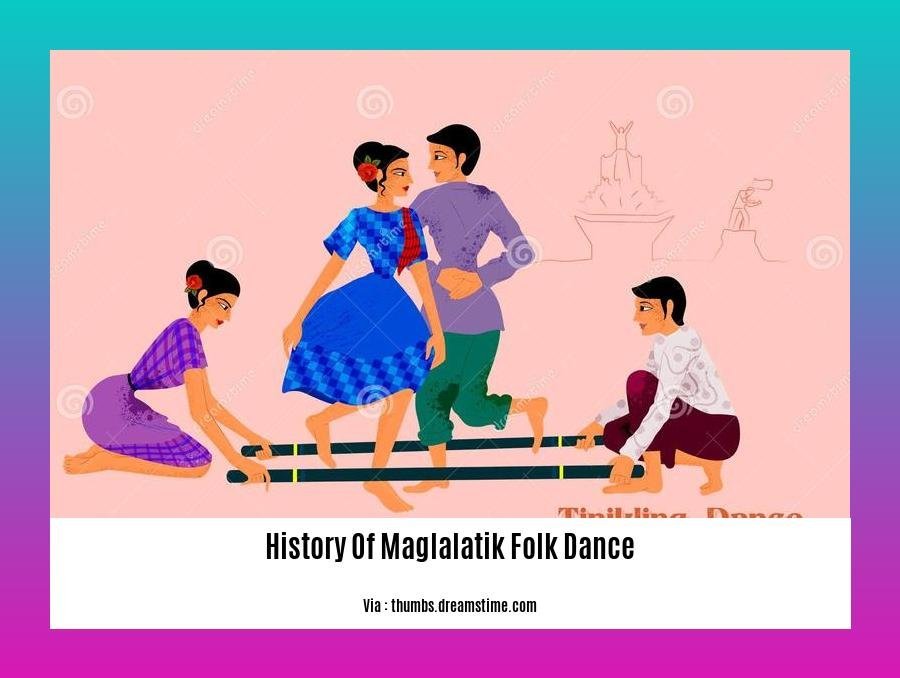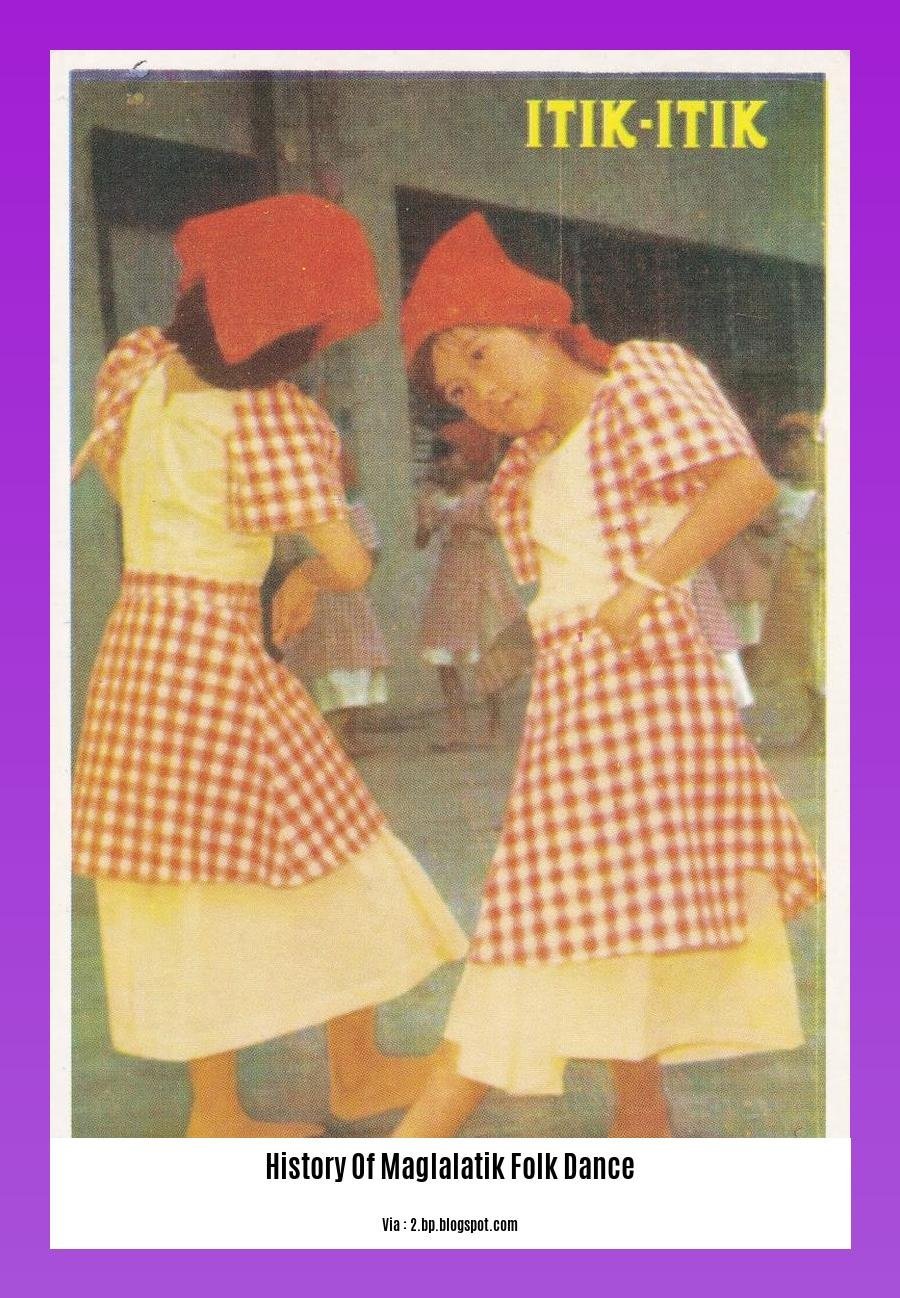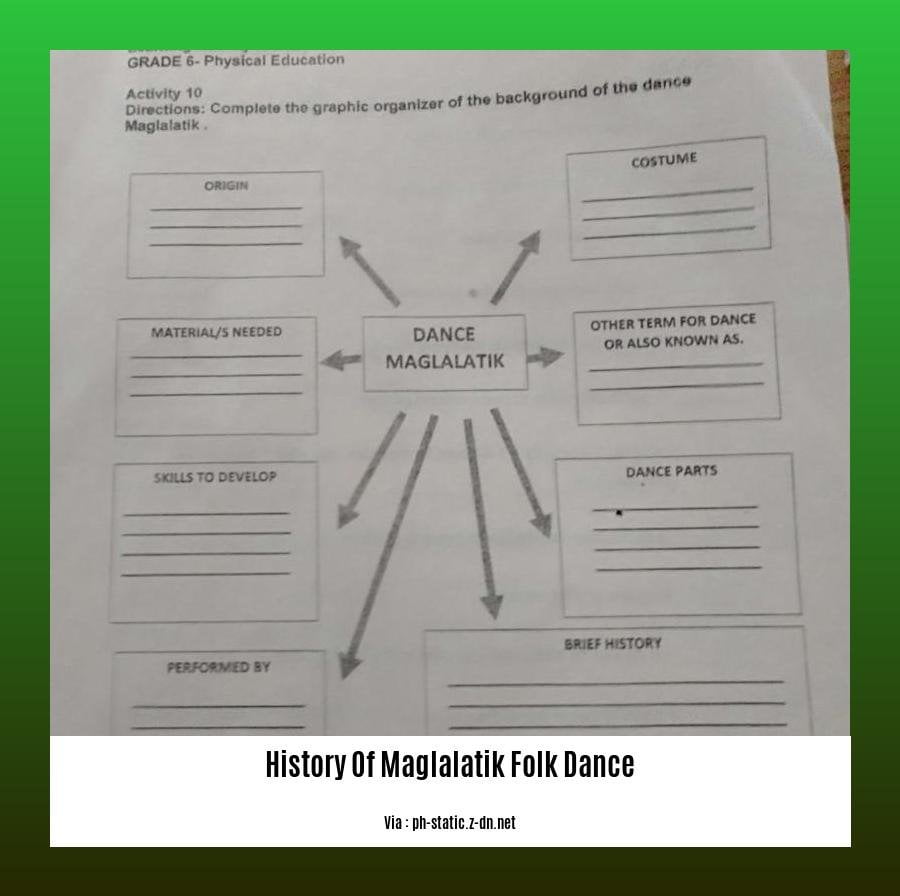Get ready to explore the fascinating world of the Maglalatik folk dance from the Philippines! This lively dance boasts a rich history, evolving from a sacred ritual into a battle-like performance. Join us as we dive into the origins, meanings, and legacy of the Maglalatik – a showcase of Filipino creativity and a vibrant reminder of our cultural roots.

History of Maglalatik folk dance
Let’s journey into the captivating world of the Maglalatik, a Filipino folk dance pulsating with energy and steeped in history. More than just a dance, it’s a powerful expression of Filipino culture passed down for generations.
Before the Spanish arrived, the Maglalatik wasn’t a dance at all, but a ritual honoring San Isidro Labrador, the patron saint of farmers. This reflects the deep reverence Filipinos have for nature and its bounty.
However, the Spanish colonial period brought change. The Maglalatik transformed into a mock battle dance, mirroring the historical clashes between the Moros (Filipino Muslims) and the Christians. Imagine the rhythmic clatter of coconut shells, symbolizing “latik” (sweet coconut meat candy), echoing the sounds of clashing swords and shields – a powerful portrayal of this tumultuous period.
One of the most unique aspects of the Maglalatik is its ingenious use of coconut shells. These aren’t just any shells; they are transformed into musical instruments, worn on the dancers’ hands and vests. As they move, these shells create a mesmerizing rhythm, a testament to Filipino ingenuity and resourcefulness.
Woven into the dance are elements of Filipino martial arts, showcasing the incredible physical prowess and teamwork of the all-male performers. The strength and precision required to manipulate the coconut shells while executing intricate footwork and formations is a sight to behold.
Today, the Maglalatik is more than just a dance; it embodies Filipino identity, resilience, and the enduring spirit of a nation that has faced countless historical challenges. It electrifies audiences at festivals and cultural events, serving as a vibrant reminder of the Philippines’ rich cultural heritage. So, the next time you have a chance to witness the Maglalatik, remember the centuries of history, tradition, and artistry it represents!
- Ever wanted to know how magazines emerged in India? Get a glimpse into the history of magazines in India.
- Curious about the evolution of manicures? Delve into the fascinating history of manicure.
- Nails always tell the story, explore the history of manicure and pedicure.
- Ever wondered how marketing came into the picture? Unravel the history of marketing ss1.

The Pre-Colonial Roots of Maglalatik: Rituals and Symbolism
The Maglalatik’s captivating performance offers a glimpse into the past, showcasing Filipino resilience and cultural strength. But this dance wasn’t always about battle. Its roots lie in traditions that flourished long before the Spanish arrived.
Imagine groups with their own unique dances – dances like the Tinikling and, of course, the Maglalatik. These weren’t mere entertainment; they were a way to connect with spirits, celebrate a good harvest, and express tribal identity.
With the arrival of the Spanish, the Maglalatik began to evolve, reflecting the changing social landscape. It became a powerful way to express the tensions and struggles between the Moros, who held onto their Islamic faith, and the Filipinos who converted to Christianity.
The coconut shells themselves hold deep symbolism. Beyond their rhythmic contribution, they represent both the weapons used in battles and the spirit of unity. They serve as a reminder of past conflicts while simultaneously conveying a message of resilience and the ability to overcome adversity.
The Maglalatik’s energy is infectious, with its jumps, spins, deep squats, and the rhythmic use of wooden sticks. These elements connect the dance to its agricultural origins, reminding us that before it was about conflict, it celebrated the harvest.
Ultimately, the Maglalatik is a celebration of Filipino identity – the strength to overcome challenges, the unity found despite differences, and a deep respect for their past. It is a story passed down through generations, a living testament to the enduring spirit of the Philippines.
Maglalatik in the Spanish Colonial Era: A Story of Conflict and Adaptation
The arrival of the Spaniards ushered in a new era for the Maglalatik. Imagine a dance, once a celebration of the harvest, thrust into the heart of a clash of cultures.
The Spanish colonial period imposed new rules and beliefs, and this cultural shift is evident in the Maglalatik’s movements. It transformed into a mock battle, a powerful symbol of the ongoing struggle between the Moros and the Christians. Every stomp, every clash of coconut shells became an expression of the Filipino experience during this tumultuous time.
The choice of coconut shells was far from arbitrary. Coconuts were essential to Filipino life – providing food, drink, building materials, and more. The shells clicking and clacking on the dancers’ bodies became a tribute to this life-giving fruit and the resilience of the Filipino people.
The energy of the Maglalatik dancers is infectious, their movements a testament to Filipino strength and spirit. Jumps, spins, and the skillful use of “bastons” (wooden sticks) pay homage to this enduring spirit. Yet, there’s a playful energy, too, a touch of humor in the way they mimic battle tactics. It’s a way of saying, “We may face tough times, but we’ll face them with creativity and a dash of fun.”
This is the essence of the Maglalatik – a dance that has evolved, adapting to new realities while remaining true to its core. From pre-colonial rituals to Spanish colonial struggles, it has borne witness to history, captivating audiences with its energy, history, and uniquely Filipino story.
The Enduring Legacy: How Maglalatik Connects Filipinos to their Past
The Maglalatik is far more than fancy footwork and catchy rhythms; it is a living link to the Philippines’ rich and vibrant history. The clashing coconut shells transcend mere sound, echoing the intensity of battles fought and the struggle for survival. The Maglalatik embodies the story of a people fighting for their livelihood, for their very way of life.
Originating in Binan, Laguna, this captivating dance depicts the symbolic struggle between the Moros and the Christians over “latik,” the prized coconut meat. Male dancers, adorned in vibrant red pants and armed with coconut shell halves, bring this struggle to life. Imagine the scene: shells attached to their hands and vests click-clacking in mesmerizing rhythm, mimicking the clang of swords and shields. Each resounding beat paints a vivid picture of this historical clash, a testament to the resilience and spirit woven into the fabric of Filipino identity.
The Maglalatik transcends mere reenactment; it is a celebration of Filipino heritage – a vibrant tapestry woven from agriculture, faith, and artistry. The coconut, a symbol of sustenance and prosperity deeply rooted in Filipino life, takes center stage. The dance pays homage to this lifeblood, reminding us of our ancestors’ reliance on the land.
Beyond mimicking a battle, the Maglalatik incorporates elegant elements of traditional Filipino martial arts, elevating combat to an art form. As the dancers move with seemingly superhuman energy, their synchronized rhythm echoes the heartbeat of the Filipino people – a people known for their unwavering spirit and ability to find joy even in adversity.
The Maglalatik is a living legacy, a reminder that the Philippines’ vibrant culture is built on the foundation of past struggles and triumphs. Each resounding clack of the coconut shells is a call to remember, to celebrate, and to carry the spirit of the Philippines into the future.
Key Points:
- Origin and Evolution: Originally a pre-colonial ritual honoring San Isidro Labrador, the patron saint of farmers, the Maglalatik evolved into a mock battle dance during the Spanish era, symbolizing conflicts between Moros and Christians.
- Coconut Shell Symbolism: The dance ingeniously utilizes coconut shells as musical instruments, worn on dancers’ hands and vests, representing both weapons and the unity that emerged from conflict.
- Cultural Significance: The Maglalatik embodies Filipino identity, resilience, and endurance. It’s performed at festivals and cultural events as a vibrant reminder of the Philippines’ cultural heritage.
- Movements and Props: The dance incorporates elements of Filipino martial arts, showcasing physical prowess and teamwork through energetic movements, synchronized coconut shell clapping, and the use of wooden sticks or “bastons.”
- Deeper Meanings: Beyond the spectacle, the Maglalatik offers insights into pre-colonial rituals, colonial influences, the importance of agriculture (particularly the coconut), and the Filipinos’ ability to adapt and thrive amidst challenges.
















